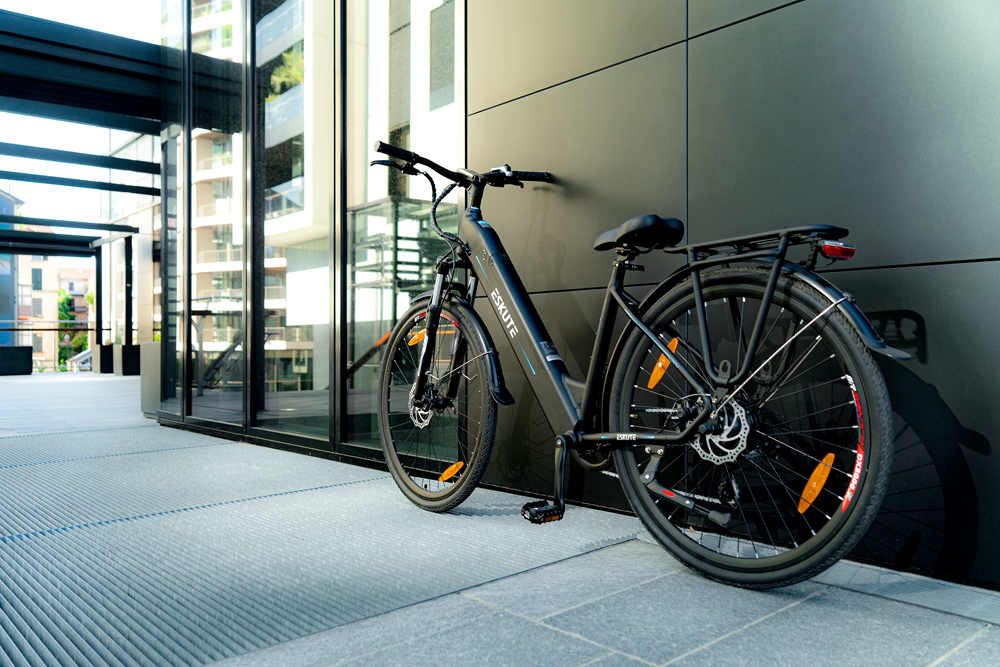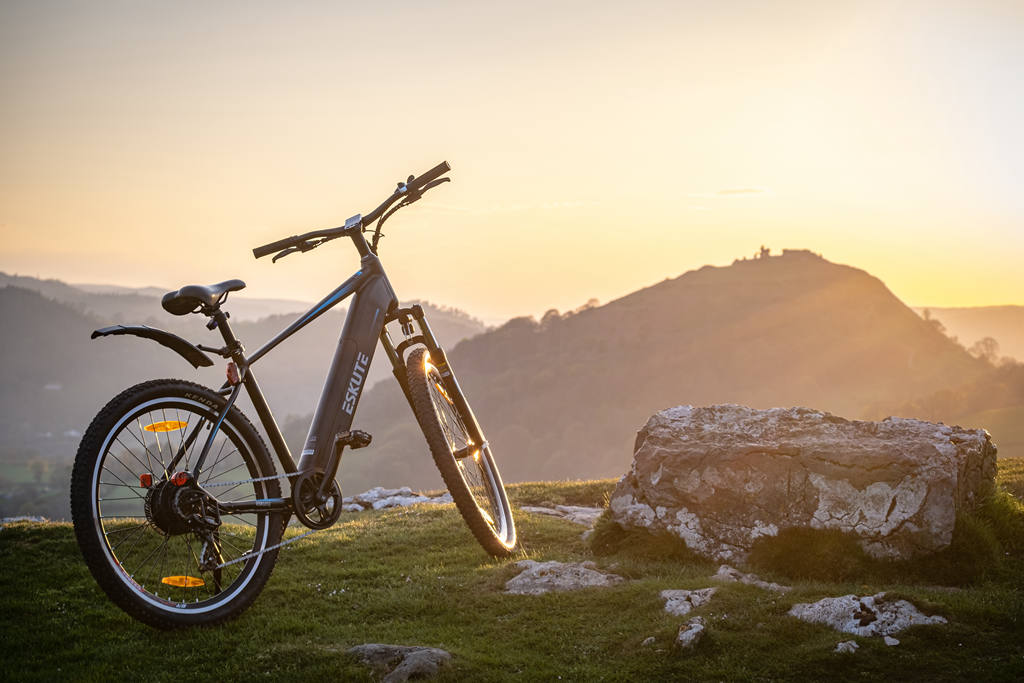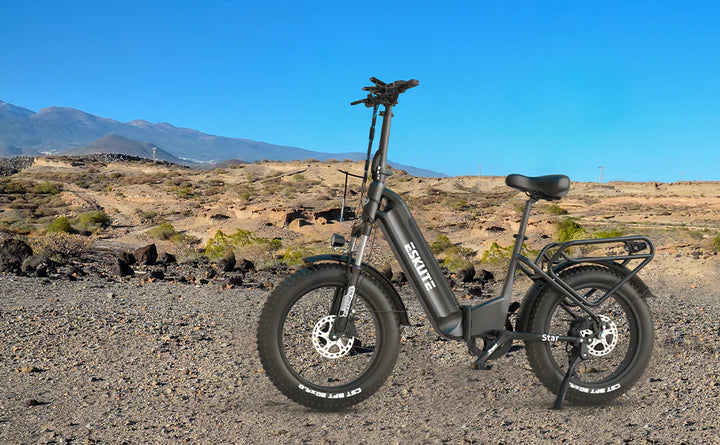Navigation
Electric bikes, or e-bikes, have become increasingly popular in recent years as an eco-friendly and convenient mode of transportation. However, when choosing the right e-bike for you, you may be faced with the decision between a fat tire e-bike and a regular e-bike. This article will compare the two types of e-bikes and help you decide which is best for your needs.
What Are Fat Tire E-Bikes?
Fat tire e-bikes, as the name suggests, feature extra-wide tires that are typically between 3.5 and 5 inches in width. These tires are designed to offer superior traction and stability on various terrains, including sand, snow, mud, and gravel. Fat tire e-bikes are also known for their comfortable ride, as the large volume of air in the tires helps to absorb bumps and shocks on the road.
One of the main benefits of fat tire e-bikes is their versatility. They can handle a wide range of terrain types, which makes them ideal for off-road adventures and outdoor activities. Fat tire e-bikes are also a great option for commuters, as they can handle uneven surfaces and provide a smoother ride on rough roads.
However, there are also some downsides to fat tire e-bikes. Their extra-wide tires can make them heavier and slower than regular e-bikes, which can be a concern for some riders. They can also be more expensive than regular e-bikes due to the specialized components and materials required to manufacture them.
What Are Regular E-Bikes?

Regular e-bikes, on the other hand, feature standard-sized tires that are typically between 1.5 and 2.5 inches in width. These bikes are designed for commuting and city riding and are not well-suited for off-road adventures. Regular e-bikes are often lighter and faster than fat tire e-bikes, which makes them a popular choice for urban commuters and recreational riders.
One of the main benefits of regular e-bikes is their agility and maneuverability. They are designed to handle city streets and crowded areas and easily make tight turns and quick stops. Regular e-bikes are also often less expensive than fat tire e-bikes, making them a more budget-friendly option.
However, regular e-bikes also have their downsides. They are not well-suited for off-road adventures and can struggle on rough terrain or uneven surfaces. They also do not provide the same level of comfort as fat tire e-bikes, as they have smaller tires and less cushioning.
Advantages and Disadvantages of Fat Tire E-Bikes
Advantages:
- Stability and Traction: Fat tire e-bikes provide more stability and traction, making them ideal for off-road adventures, beach rides, and even snow riding.
- Smooth Ride: The larger contact area with the ground provides a smoother ride on bumpy roads.
- Improved Comfort: The wide tires provide more cushioning, which means less impact on the rider's body.
- Eye-Catching Design: The unique and rugged look of fat tire e-bikes is often a draw for riders who want to stand out.

Disadvantages:
- Heavy and Bulky: The wide tires and larger frame make fat tire e-bikes heavier and bulkier, making them more difficult to transport.
- Slower Speed: Due to the wider tires and larger frame, fat tire e-bikes are often slower than regular e-bikes.
- Higher Cost: The additional features and wider tires of fat tire e-bikes often result in a higher price tag than regular e-bikes.
- Limited Use: While fat tire e-bikes are ideal for off-road adventures and beach rides, they may not be suitable for everyday commuting or leisurely rides around town.
Advantages and Disadvantages of Regular E-Bikes

Advantages:
- Commuting: One of the significant advantages of regular E-bikes is that they are perfect for commuting. They can help you get to work, run errands or travel around the city without breaking a sweat. You can easily cover long distances without worrying about being exhausted when you arrive at your destination.
- Easy to use: Regular E-bikes are easy to use, and you don't need to be an expert cyclist to ride them. They have an electric motor that assists you in pedaling, making it easier to navigate hills or inclines. You can also choose the level of assistance you want, depending on the terrain or your fitness level.
- Environmentally friendly: Regular E-bikes are environmentally friendly Regular E-bikes have the advantage of emitting zero emissions and are powered by rechargeable batteries that can be charged with clean energy sources like solar power. Opting for a conventional E-bike ride can be a conscious step towards minimizing your carbon footprint and promoting a cleaner environment.
- Cost-effective: Regular E-bikes are cost-effective since they do not require fuel and have minimal maintenance costs. Opting for electric bikes can help you save a considerable amount on expenses related to fuel, maintenance, and parking charges, presenting a cost-effective solution in comparison to cars or motorcycles.
Disadvantages:
- Limited range: One of the major disadvantages of regular E-bikes is their limited range. They have a limited battery life, which means you can only travel a certain distance before the battery needs recharging. This can be a problem if you plan to use your E-bike for long-distance trips.
- Heavy: Regular E-bikes are relatively heavy compared to traditional bicycles. The added weight of the battery and motor can make them challenging to carry or maneuver, especially if you need to lift them onto a bike rack or carry them up a flight of stairs.
- Expensive: Regular E-bikes can be expensive, and the cost can be a deterrent for some people. They are more expensive than traditional bicycles, and the cost can vary depending on the brand and features.
- Maintenance: While regular E-bikes have minimal maintenance costs, they do require regular maintenance, just like any other bicycle. You need to maintain the battery, motor, brakes, and tires, which can add up to the overall cost of owning an E-bike.

Which One Should You Choose?
In the end, the decision between a fat tire e-bike and a regular e-bike depends on your personal preferences and needs.
If you prioritize speed and efficiency on paved roads and don't need to tackle rough terrain or snow, a regular e-bike may be the better choice for you. It will offer you a smoother and faster ride while also being more maneuverable and lighter in weight.
In contrast, if you desire to venture into diverse and challenging landscapes, like sandy, snowy, muddy, or rocky terrains, a fat tire e-bike may prove to be a better fit. It will provide you with better stability, traction, and comfort, as well as a more adventurous and unique riding experience.
Overall, both types of e-bikes have their advantages and disadvantages, and each can offer you a great way to commute, exercise, or have fun. In the end, the ideal e-bike for you is the one that aligns with your lifestyle, financial capacity, and personal preferences.
Regardless of which type you choose, it's important to make sure you select a high-quality brand that you can trust. One brand that stands out in the e-bike market is Eskute, known for its commitment to producing durable, high-performance electric bikes that are both affordable and eco-friendly. Investing in an Eskute e-bike will give you the assurance that you have made a smart choice for your transportation requirements.
FAQs
Q: What is the maximum speed of a regular E-bike?
A: The maximum speed of a regular E-bike varies depending on the country and the type of E-bike. In the US, the maximum speed for a regular E-bike is 20mph, while in Europe, it is 25km/h.
Q: How long does the battery last on a regular E-bike?
A: The battery life of a regular E-bike depends on several factors, such as the terrain, rider weight, and level of assistance. On average, a regular E-bike battery can last between 20-50 miles on a single charge.
Q: Are regular E-bikes legal?
A: Regular E-bikes are legal in most countries, but there are regulations on the maximum speed and power output. It is essential to check the laws in your country or state before purchasing an E-bike.
Q: Can you ride a fat tire e-bike on paved roads?
A: Yes, you can ride a fat tire e-bike on paved roads, but it may not be as efficient or comfortable as a regular e-bike due to the wider tires.
Q: Can you ride a regular e-bike off-road?
A: While it is possible to ride a regular e-bike off-road, it is not recommended as they are not designed for that type of terrain and may not be as stable or safe.
Q: Which type of e-bike is better for commuting?
A: Regular e-bikes are better for commuting as they are designed for efficient and quick transportation.










Leave a comment
This site is protected by hCaptcha and the hCaptcha Privacy Policy and Terms of Service apply.